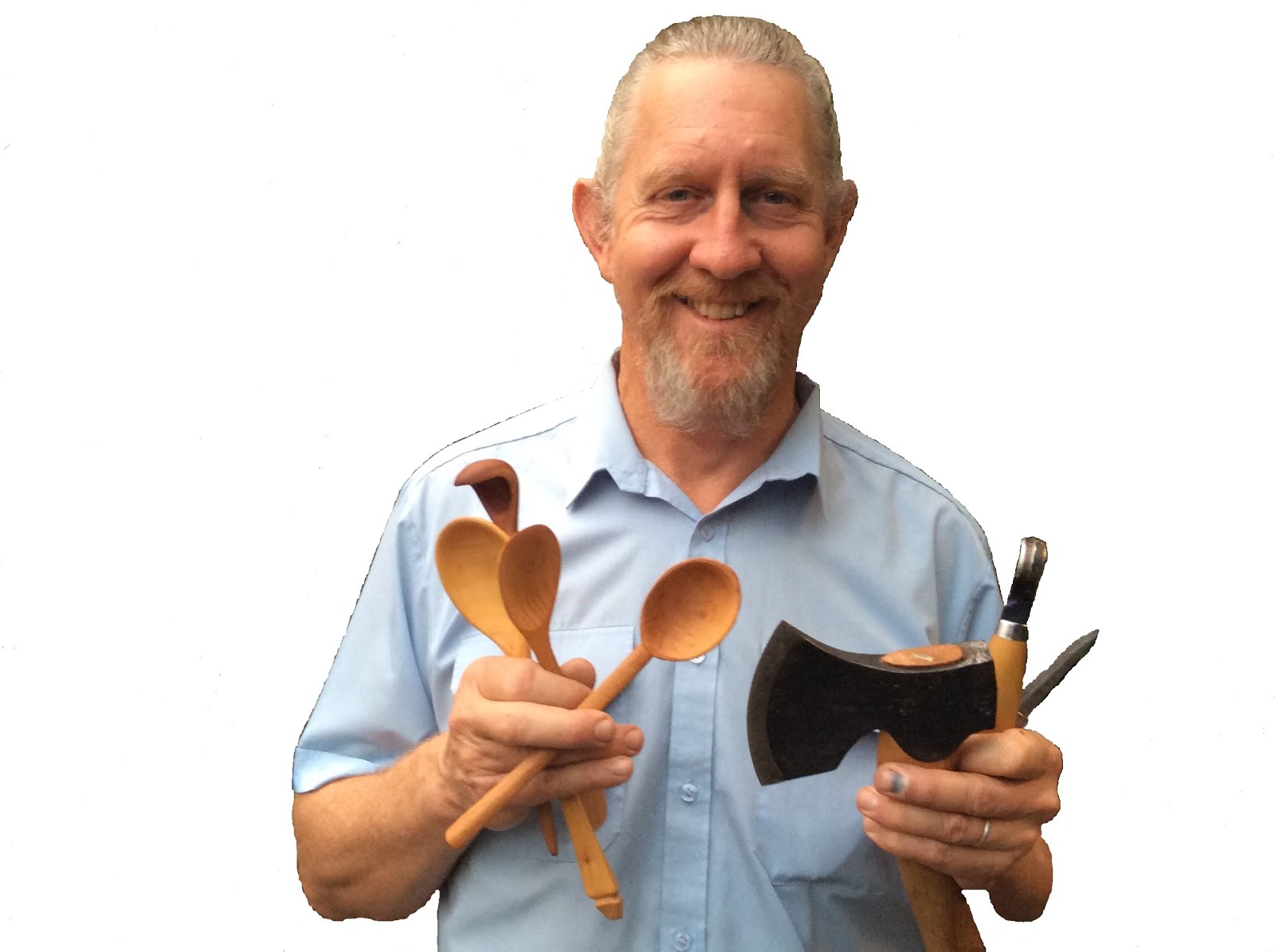| A nice old door badly in need of some lovin'! |
This would be my first job for 2015 after coming back from my summer holidays.
Laying the door on a pair of tall saw horses, I began my forensic look. Hmmm....
It's what you would call a low waisted four panel entrance door, made from Oregon (Douglas Fir), with panels and mouldings made from Western Red Cedar. With the exception of the brass knocker, most of the door furniture is cast iron, including the hinges. The door is 1 7/8" thick (about 50mm).
Loose and compromised mortice and tenon joints.
This door has clearly been hung in at least two different openings during it's long life. You can always tell if a traditional wedged mortice and tenon door has been cut shorter. How?
| Both the top and bottom of the door had been sawn shorter sometime later in its life. |
There is an old convention in traditional joinery that the distance between the end of the door and the nearest mortice is equal to the thickness of the door. The outer tenon is always haunched to make this possible. I suspect the door, made for it's original opening, was at least 6" taller than it is now. The photo above shows how the door has been cut through the end mortice. This compromises the joint - as was the case in each of the 4 corners of the door.
Clearly the joints would need to be re-wedged, as the wedges were all a bit loose - if not missing!
| Open joints where the mullions meets the mid-rail. |
The seperated hanched tenon joints were also crying out for attention. The top and bottom rails being cut shorter into the outer tenons would have contributed to this, as those end rails spread further apart.
A few holes to fill in the faces and edges of the door.
Once the doors joints had been repaired, there would be other repairs to be made.
| The old cut-out for the original Rim Lock latch. |
The housing for the old original rim lock (no long present) would be filled. The void would be cleaned up and filled to flush with good quality 1/4 " ply. It will be invisible when painted.
| The night latch cylinder hole and housing will need to be filled. |
At some time in the history of this door, the rimlock, with it's big cast iron key, was replaced by a night latch with a keyed cylinder. As a new deadlock will be fitted when the restored door is re-hung, the old hole and housing will need to be flush filled first, likewise with 1/4" ply.
| The key hole on this side will not be filled, as the nice old decorative cast cover plate will be going back on. |
| There were two sections where extensive damage to the edge door would need to be repaired. |
The stiles and rails were made from Oregon (Douglas Fir), so I would use similar material to insert new pieces once the chasm had been cleaned out and made more even for ease of gluing in a new insert.
| Wear around the huge cast iron knob on the door's front. |
The big front door knob (pull) in the centre of the mid rail must've been hanging loose for decades, as there was a big wear patch is on the front of the door and a huge crater in the back of the door where the fixing nut and washer were. These would need to be filled too.
Moulding and panels needing some serious work.
| Some sections of the bolection moulding were missing, including this tricky piece. |
The bolection moulding on the front of the door is a massive 3" wide, bordering each of the 4 panels. Some of it is missing in the straight sections, some of it is too damaged and needs to be replaced, and one of the curved tops needed a major sort-out. Removing the bolection mould may damage it further, despite care taken. Only the removal will show that...
The rear moulding is much smaller, but may not be used again, depending on the primary modification I will be doing to the door - the top panels are to be replaced with leadlight glass instead of the wooden panels. That changes a few things...
| The bottom panels are in bad shape... and will best be replaced. (shown here with the bolection moulds removed.) |
The bottom panels are very split - right through in several places. These will best be replaced. Maybe I can use the material in the top panels to replace the bottom ones...
Time to pull the door apart for the re-build. No doubt the journey of discovery will continue!
Let the challenge begin!
.jpg)


